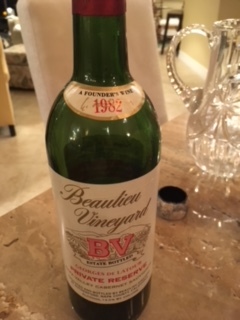Champagne has been loathe to dispel the myth that they invented sparkling wine. I can’t blame them. They have commanded the sparkling wine industry for centuries and hold on to their rightful claim that only they can call champagne “champagne.”
But history will show that methode champenois, the process by which today’s champagne is made, was an invention of English physician Christopher Merret. He was the first to add sugar to still wine to produce a secondary fermentation.
But a century earlier, Dom Perignon was fumbling to tame the bubbles in what he called “the devil’s wine.” His problem was that fermentation would stop as temperatures in northern France dropped, only to resume in the spring when temperatures climbed. The result was carbon dioxide (bubbles) which once trap would cause a bottle to burst. Champagne started as an accident; for the Brits sparkling wine was intentional.
However apologetic the good monk, the Brits loved the bubbles in the 17th century and invented a stronger glass bottle. Voila, champagne lived on.
With that history refresher, I was eager to sample two sparkling wines made in England. With more than 400 wineries in southeast England, the Brits have been dabbling in winemaking for some time. However, their success with sparkling wine didn’t appear until global warming made its growing conditions more hospitable.
The two sparking wines — “Ridgeview Bloomsbury and Ridgeview Cavendish — were quite good. They both use the same primary grapes used in Champagne — chardonnay, pinot noir and pinot meunier. That makes their product closer to champagne than prosecco (glera) and cava.(xarello and more).
I liked the elegance and depth of the Bloomsbury brut, which was different from the Henriot Brut I tasted as well. But it held its own.
So did its price. The Henriot seemed like a deal at $45 compared to the $55 prices for each English sparkling wine. I have to wonder why anyone would choose and English sparkling wine when for less money he could get French champagne.
However, the English are proud to drink locally made sparkling wine. In fact, sales of champagne have plummeted in England due in part to the local competition as well as the popularity of prosecco and Brexit.
If you are English, be proud of these wines. Surely Dr. Merret would.
For more champagne recommendations, see “My Column.”








